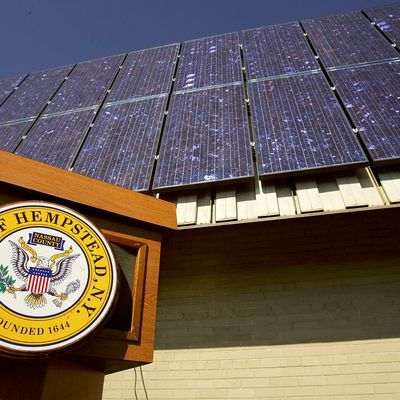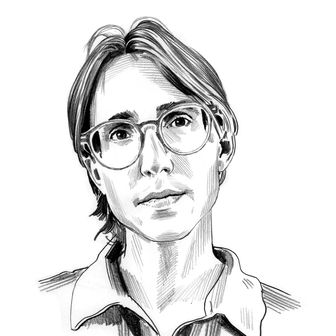
New York could achieve a net-zero economy — the gold standard of environmental advocates, in which all energy is drawn from carbon-free sources — by 2050, if the state is able to live up to the Climate Leadership and Community Protection Act that lawmakers and Governor Andrew Cuomo are working on this week. The bill would require New York to get 70 percent of its electricity from renewable sources by 2030, and by 2050, the state would have to cut emissions by at least 85 percent below 1990 levels. To offset the remainder, the state would enact measures to remove carbon dioxide from the atmosphere, like mass tree-planting and the restoration of wetlands.
The bill, if passed, would be one of the world’s most ambitious climate plans, made more impressive by the size of New York’s economy. If the state were its own country, its economy would be the 11th largest in the world, falling between those of Canada and South Korea. “This unquestionably puts New York in a global leadership position,” Jesse Jenkins, an energy expert and postdoctoral fellow at Harvard, told the New York Times.
Of course, energy costs will go up in pursuit of the goal. New York gets around 60 percent of its electricity from carbon-free sources — primarily an energy mix of hydroelectric and nuclear power. To make up the difference, the state will invest in large-scale offshore wind farms and rooftop solar projects. More challenging than the electric grid is the heat for homes and commercial buildings, which generally burn natural gas or oil, and take up around a quarter of the state’s emissions. In New York City, for example, an April law requiring skyscrapers to retrofit to meet new energy standards is expected to cost building owners over $4 billion.
Even more challenging is transportation, which takes up a third of the state’s emissions. More so than other sectors, cars rely on factors outside of state control: Currently, the Trump administration is attempting to roll back federal efficiency standards and to halt environmentally concerned states from establishing their own. (Luckily, Detroit is in New York’s corner here, as the auto industry considers the White House’s deregulation “untenable.”)
In an interview with WCNY, Governor Cuomo called the bill “the most aggressive climate-change program in the United States of America, period.” If it succeeds, it will be the fifth such law enacted in the last year; the others include measures in California, Nevada, New Mexico, and Washington. These laws show the importance of the trifecta power on the state level, as all five have Democrats in the governor’s mansion and in both chambers of the legislature. The Climate Leadership and Community Protection Act has existed in some form since 2016, but only with the flip of the New York State Senate last November did it become politically viable.
The bill also marks the first major piece of legislation to include aspects of Alexandria Ocasio-Cortez’s Green New Deal, routing hundreds of millions of dollars into polluted or environmentally vulnerable areas of the state in an attempt at both economic and environmental revival. Justine Calma at Grist explains:
The bill does lay out some guidelines on which neighborhoods will be considered disadvantaged: those include areas with lower incomes, locales where pollution has placed residents’ health at risk, and places more vulnerable to storm surges, flooding, and heat. Public hearings will be held prior to finalizing criteria for which regions will receive the earmarked funding. The act also includes stipulations intended to provide protections for displaced fossil fuel workers and ensure fair wages to workers building the renewable energy economy that’s to come.
Despite the compromise, grassroots groups success in allocating more than a third of the bill’s funding for disadvantaged communities sets a precedent for ensuring a significant portion of climate adaptation and resilience projects, such as energy efficiency upgrades to community solar projects, are located in communities that have been hit first and worst by climate change and other consequences associated with burning fossil fuels.
The news of the bill’s impending success comes, like all days in the Anthropocene, with reminders of the necessity of decarbonization. In Canada, scientists were shocked to discover that Arctic permafrost is thawing 70 years earlier than expected, increasing the likelihood that we may lock in a feedback loop, as carbon dioxide and methane trapped in the soil are released to devastating effect. And Chennai, India’s sixth-largest city, entered a state of crisis when its four water reservoirs ran dry. Formerly known as Madras, the city has a population greater than that of Los Angeles.






























